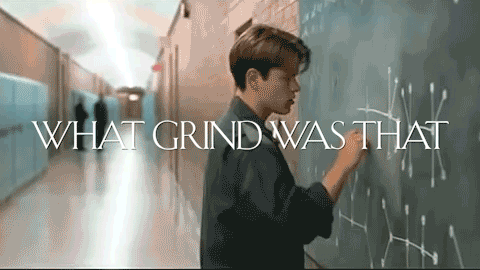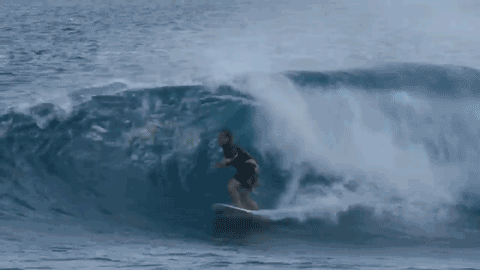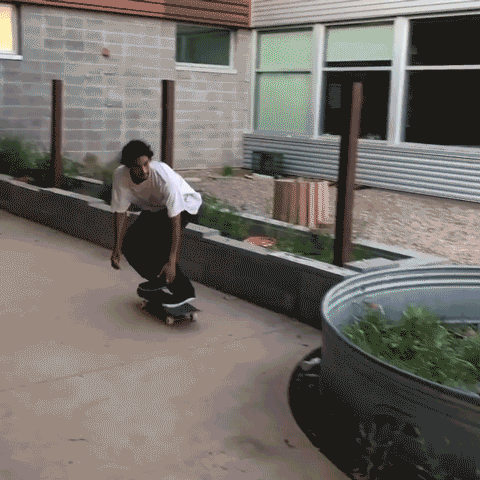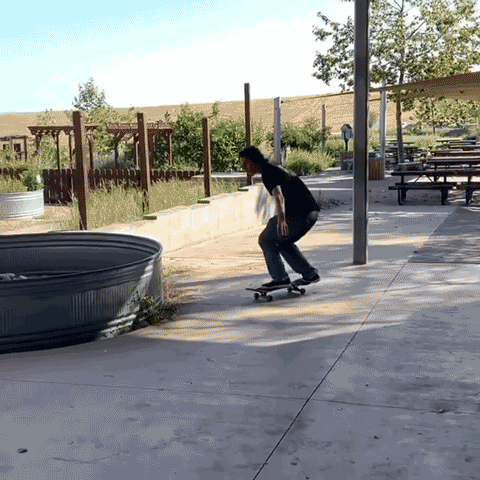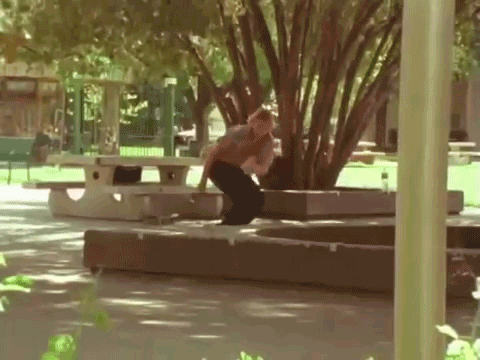What Grind Was That
On the universal power of the circle, or which way did that grind go?
By Mike Munzenrider
The New York Times unexpectedly dove into board sport semantics back in the summer of 2018. Reporter/skater Matt Ruby had observed a cross-discipline argument on social media about what to call a new surf trick, a spin off a wave, done by Albee Layer. Ruby went on to interview surf, skate and snowboard legends in an attempt to nail down how to name an NBD in surfing, which was an ABD in the sports that surfing spawned.
It all came down to Layer’s rotation and how it should be classified — the landlubbers said it was a backside alley-oop, while surfers said Layer rode a frontside wave, overriding anything that came later. Skateboarding and snowboarding have taken on evolved understandings of frontside and backside, matters original to surfing based which way you’re facing relative to the swell. For the surf side of the naming game, it was a turf battle. The surf trick goes by surf-naming conventions, damnit, said Kelly Slater, while upstarts like Tony Hawk argued that named tricks that had exceeded surfing were settled law, with naming rights going to the skaters and snowboarders who did them first.
Save for the occasional flares of confusion around things like fakie backside tailslides and the arcana around the proper use of “varial,” I consider skateboard trick naming conventions to be relatively set. Then, the other night, former pro skater and longtime contest judge John Muldoon hit me with an Instagram direct message that sent me for a loop.
Alexis Ramirez with the grind in question
Bradan Hoban with the other grind in question
He offered two clips, each 50-50 grinds on a round tub or trough, done at the same spot by Alexis Ramirez and Braden Hoban. “Need your 2 cents on a debate,” Muldoon wrote, “which one would you say is frontside and which is backside?” I’d seen Ramirez’ looped and leaned grind a couple days prior, appreciating the posturing and all that and how someone had finally, really grinded a full circle. I typed back, “Can’t deny the roll up: [Ramirez] is backside and [Hoban] is frontside.”
I’d vindicated Muldoon, who’d gotten into a bit of a tiff about it earlier in the day; he went on to report some head-scratching news. A small cross section of mutual friends, he said, dudes who I figured should know, were claiming Ramirez’ trick was frontside.
Like many of us, I’ve put in silly amounts of time thinking about and trying to understand skateboarding, and part of that is deciphering the sometimes convoluted but mostly straightforward system of trick categorization and nomenclature. As a kid I read Transworld Skateboarding and wondered if a pivot grind was just another word for a 5-0; I worked toward an elegant and simple mental system for naming tricks while also pushing for “slipfoot” to be a name for one-footed Ollies; eventually, as an adult, I was that dude who said there’s no such thing as a nollie Cab because a Caballerial is inherently fakie. At one point I was paid to write captions for skateboard photos -- I could name that thing what I reasonably thought that thing was called -- that were published in print magazines. I thought I knew something.
I took the question of the grind to Twitter, tapping out a tweet in which I should have noticed the typo, and waited.
Evidently, body posture and a gut feeling suddenly meant something when it came to a grind being frontside or backside, factors I never thought relevant until a flood of “frontside” hit my mentions. Those mentions, initially, were offered with no supporting details, no work shown, as if the inversion of my hard-earned logic was self-evident. Astute observers saw the question as a #skatetwitter blue dress moment, the initial and literal eye test the only thing that mattered.
My tweet was ratioed, not in the traditional sense but by responses denying my own internal logic. Probably seven out of 10 skaters who weighed in said frontside, arguing away the backside approach in favor of newly discovered “tangents,” imaginary lines that supersede an obstacle’s position relative to the back or front of a skater. At least pro skater Ryan Lay called it backside.
“As someone who has done this on a similar spot and who has trouble grinding rails frontside, it’s definitely backside. That’s how you pinch and naturally wanna curve backside,” he tweeted, following it up with supporting evidence, curved but not wholly circular grinds, that are indisputably one side or the other. He even put out a series of Instagram story posts to illustrate the point. I sent my fellow traveler a DM, asking what had compelled him to come out so hard for backside.
“People are confusing the direction the rail curves with the stance he’s riding up at,” Lay tapped back. “Bs or fs has absolutely nothing to do with body contortion, direction you’re grinding, how you pinch or how you pop out. Is your back in front of the obstacle or behind it?” I asked if he’d ever encountered the contortion argument. “No, I feel like I’m losing my mind. Literally none of that matters, and I feel like everyone can only think in terms of what a frontside grind looks like in a bowl.” I brought up Muska’s S-rail grind from Fulfill the Dream; Lay countered by summoning Uriel Luebcke -- do grinds now flip back and forth between frontside and backside?
Uriel Luebcke’s infamous grind
Out of curiosity I sent an Instagram DM to Kevin Wilkins, a former Transworld Skateboarding editor who was also editor of The Skateboard Mag, where I’d worked for him. I wanted the input of someone who’d been involved with captioning thousands of skate photos. I sent the Ramirez clip, saying, “An online debate rages: is that grind frontside or backside?” Six minutes later, Wilkins shot back, “Frontside. Debate over!” I hadn’t seen that coming.
He said cut the trough, make it a half circle and see what type of grind you get. I told him that was one of the better arguments I’d seen. “I think the misconception derives from the starting point,” he wrote back. “Because the 50-50s both go from outside the circle to inside the circle. The best concession (both camps will find common ground) is probably to talk about it as a transfer. Right? Transition/spine brains and ledge/rail brains can both understand that.”
Though it complicates the description, I’d agreed elsewhere that admitting some type of transfer had taken place was likely the best way to describe the grind. I still wanted Wilkins’ caption.
Kyle Leeper, FSBS or BSLS?
“Have you thought of it in terms of WWKLD?” he asked. “What would Kyle Leeper do?
“I have not!”
“He was the first guy I remember skating the inside of planters like they were ledges. And when he did a backside tailslide inside the planter, it wasn’t called a frontside bluntslide.”
Yes. He offered his caption.
“The caption makes fun of the frontside-or-backside argument or sidesteps the naming of the trick, and just talks about skating things not made for skating and the universal power of the circle.”
I replied: “I’m down with that.”
— Mike Munzenrider lives in Minneapolis.

